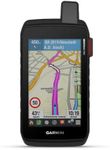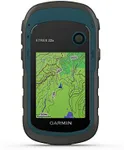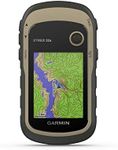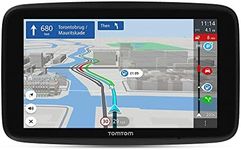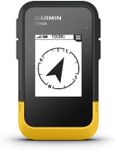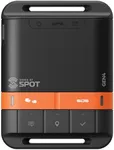Buying Guide for the Best Handheld Gps
Choosing the right handheld GPS device can significantly enhance your outdoor adventures, whether you're hiking, geocaching, or exploring new territories. The key to finding the best fit for you lies in understanding the various specifications and how they align with your specific needs. Here are the essential specs to consider when selecting a handheld GPS device.AccuracyAccuracy refers to how precisely the GPS device can determine your location. This is crucial for navigation and safety, especially in remote areas. Accuracy is often measured in meters, with lower numbers indicating better precision. For casual hiking or geocaching, an accuracy of 5-10 meters is usually sufficient. However, for more demanding activities like mountaineering or professional surveying, you might need a device with sub-meter accuracy.
Battery LifeBattery life indicates how long the GPS device can operate on a single charge or set of batteries. This is important for ensuring that your device lasts throughout your trip. Battery life can range from a few hours to several days. For short day trips, a device with 8-12 hours of battery life may be adequate. For multi-day excursions, look for devices that offer 20+ hours or have the option to use replaceable batteries.
DisplayThe display is the screen where you view maps and other information. It’s important for readability and ease of use. Displays can vary in size, resolution, and whether they are color or monochrome. Larger, high-resolution color displays are easier to read and provide more detail, which is beneficial for complex navigation. However, they may consume more battery. Smaller, monochrome displays are more energy-efficient and can be sufficient for basic navigation.
DurabilityDurability refers to how well the GPS device can withstand harsh conditions such as water, dust, and impacts. This is crucial for outdoor use. Look for devices with high IP ratings (e.g., IPX7 or higher) for water resistance and robust construction for shock resistance. If you plan to use the GPS in extreme environments, prioritize durability to ensure it can handle the conditions.
Mapping and Navigation FeaturesMapping and navigation features include preloaded maps, the ability to add new maps, and navigation aids like waypoints, routes, and track recording. These features are essential for effective navigation. Basic models may come with simple base maps, while advanced models offer detailed topographic maps and the ability to download additional maps. Consider your navigation needs: for casual use, basic mapping may suffice, but for serious exploration, advanced mapping features are beneficial.
ConnectivityConnectivity options such as Bluetooth, Wi-Fi, and ANT+ allow the GPS device to connect with other devices and accessories. This can be useful for transferring data, receiving updates, and using additional sensors like heart rate monitors. If you want to integrate your GPS with other tech or share your adventures online, look for models with robust connectivity options. For basic navigation, connectivity may be less critical.
User InterfaceThe user interface (UI) is how you interact with the GPS device. A good UI is intuitive and easy to use, which is important for quick and efficient navigation. Some devices use buttons, while others have touchscreens. Touchscreens can be more user-friendly but may be harder to use with gloves or in wet conditions. Button-operated devices are often more reliable in extreme conditions. Choose a UI that matches your comfort level and the environments you’ll be navigating.

